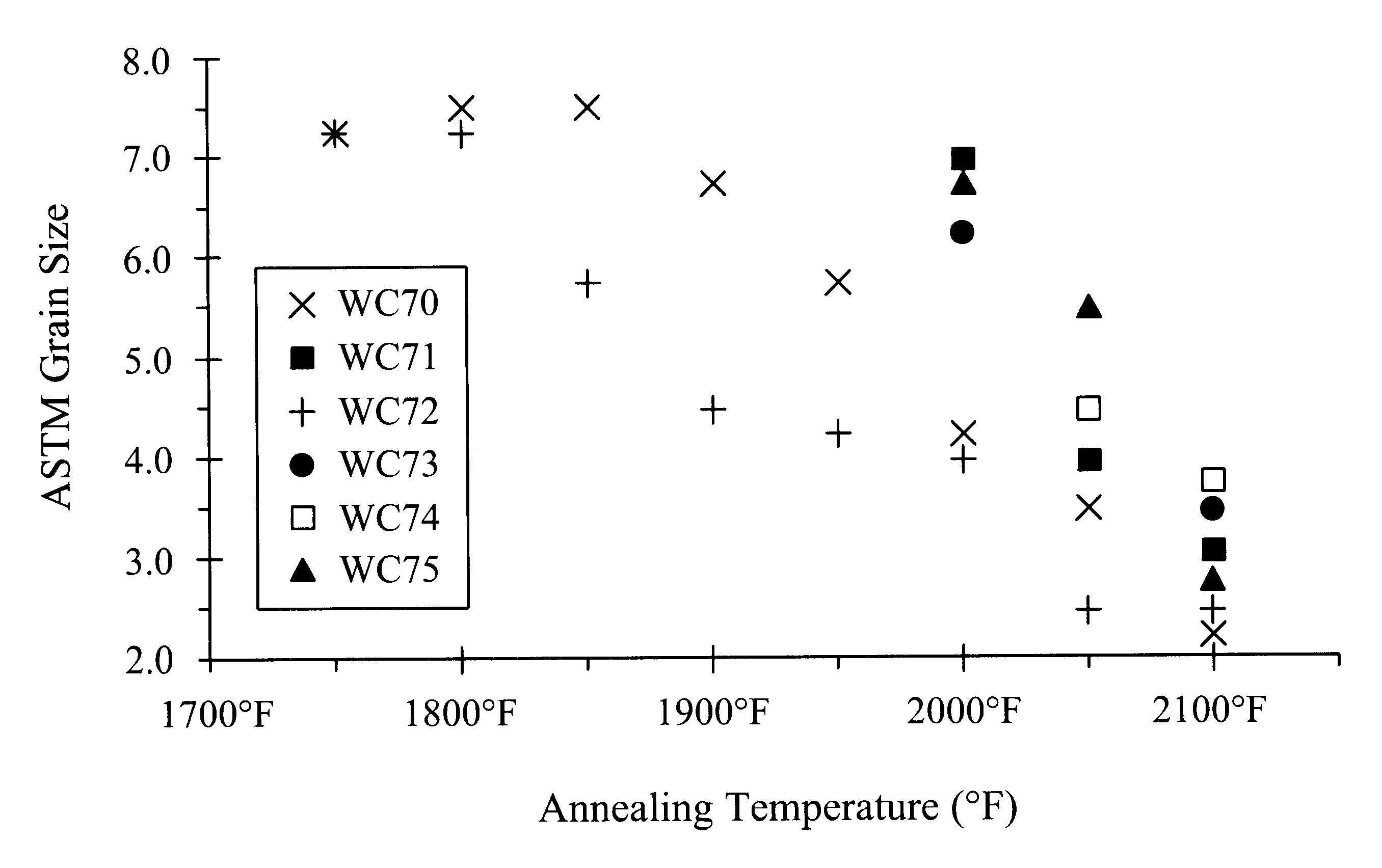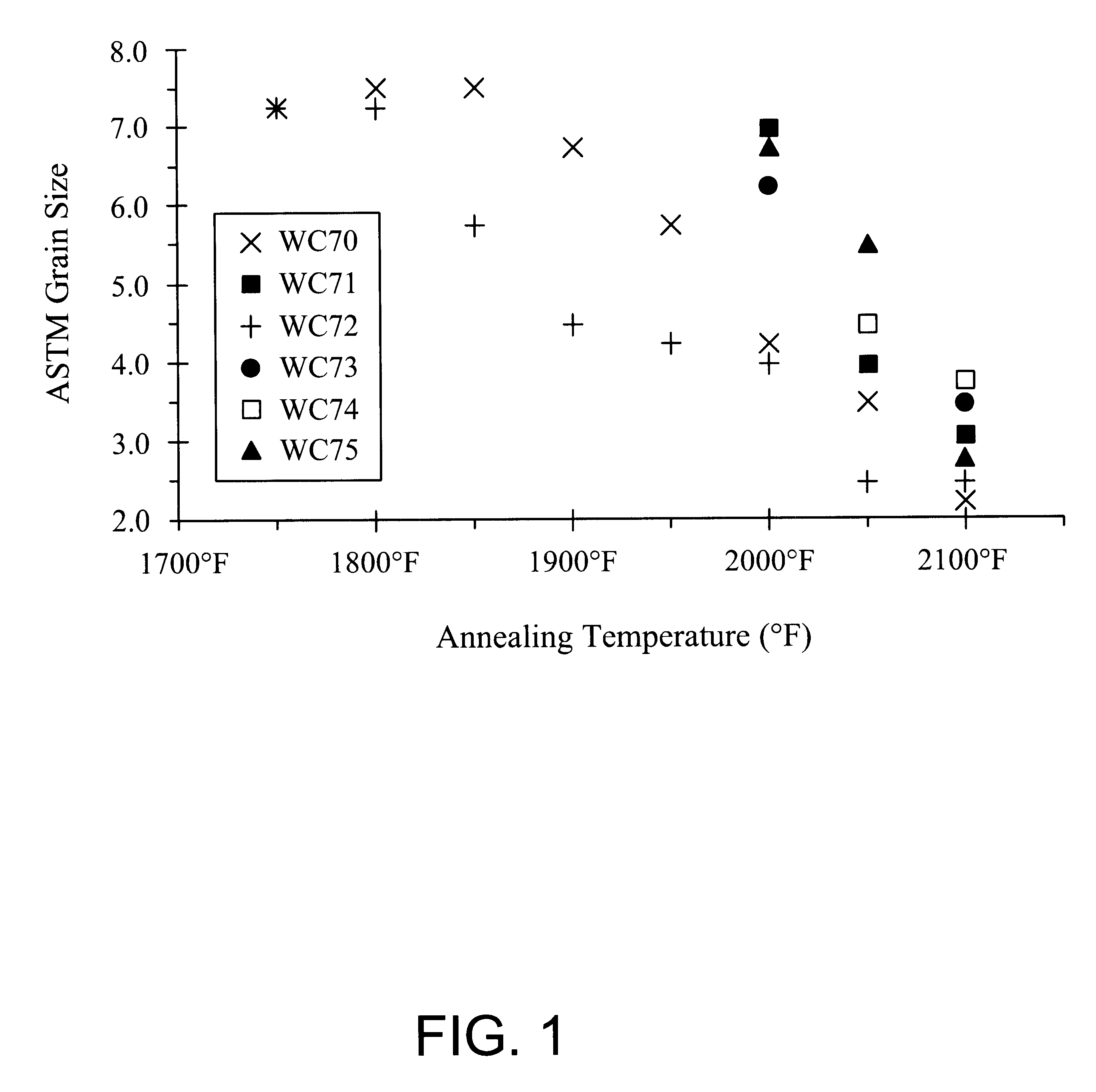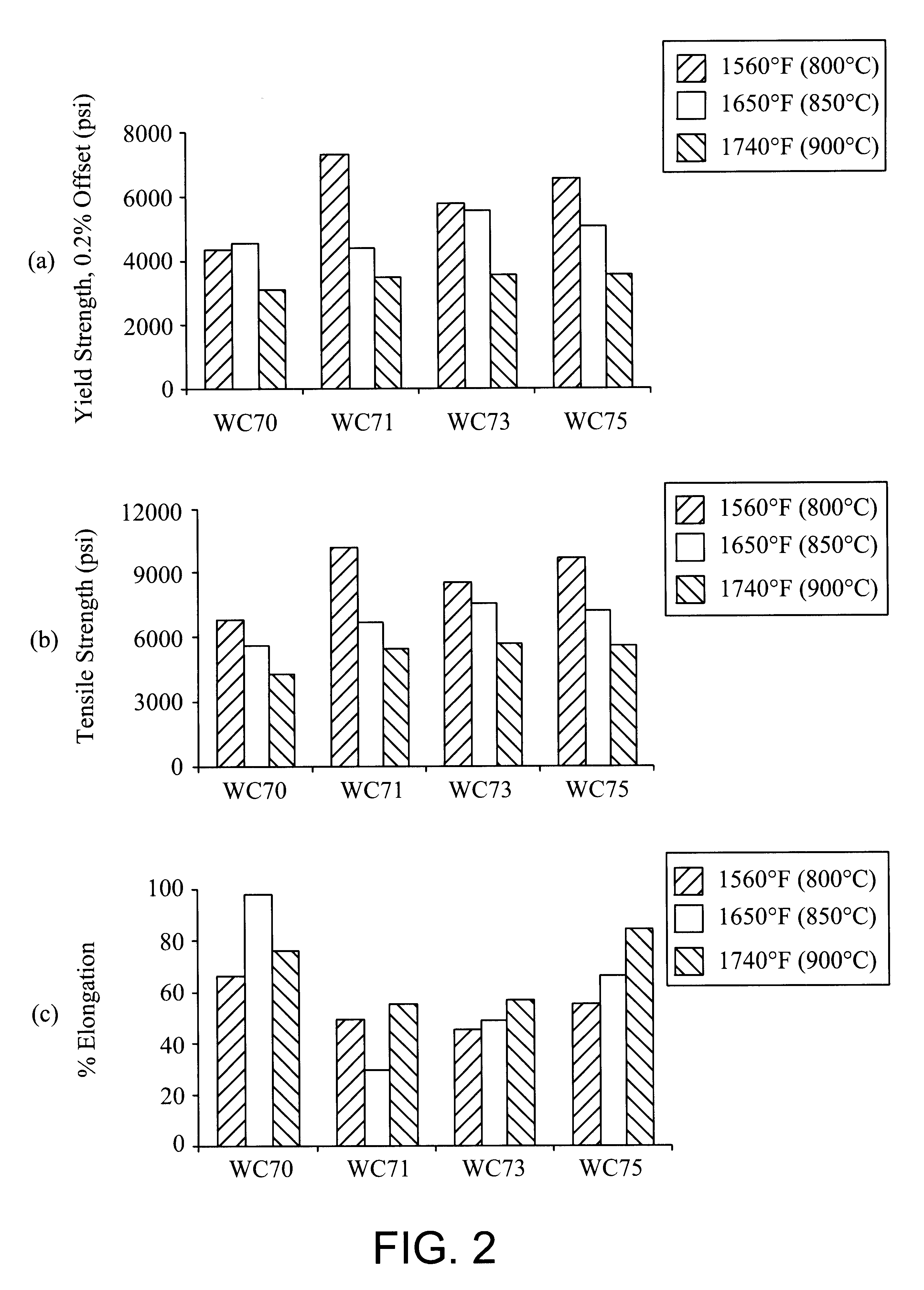Ferritic stainless steel having high temperature creep resistance
a stainless steel and high temperature technology, applied in the field of ferrritic stainless steel having high temperature, can solve the problems of reducing operating efficiency, poor conductor of electricity, brittle ceramics, etc., and achieve the effect of increasing the overall efficiency of the cell and high efficiency
- Summary
- Abstract
- Description
- Claims
- Application Information
AI Technical Summary
Benefits of technology
Problems solved by technology
Method used
Image
Examples
Embodiment Construction
It was postulated that replacing ceramic SOFC interconnects with stainless steel interconnects would offer advantages. Initial work in this area, however, revealed drawbacks in the various existing stainless steels considered. For example, austenitic nickel-base materials were, found to exhibit a poor coefficient of thermal expansion ratio. Alumina-forming ferritic alloys were found deficient because they are not electrically, conductive after they oxidize.
The inventor also evaluated certain commercially available ferritic stainless steels offered by Allegheny Ludlum Corporation, Pittsburgh, Pa., under the trademarks AL 29-4-20, ALFA-IV.RTM., and BRITE.RTM., at elevated temperature for their suitability as interconnects in SOFC's. AL 29-4-2.RTM. alloy is described by UNS designation S44800 and is listed in several ASTM designations, including A240. The typical composition limits (in weight percentages) for AL 29-4-24 alloy are 28.0-30.0 chromium, 3:5-4.2 molybdenum, 2.0-2.5 nickel, ...
PUM
| Property | Measurement | Unit |
|---|---|---|
| creep rupture strength | aaaaa | aaaaa |
| creep strain | aaaaa | aaaaa |
| weight percent | aaaaa | aaaaa |
Abstract
Description
Claims
Application Information
 Login to View More
Login to View More - R&D
- Intellectual Property
- Life Sciences
- Materials
- Tech Scout
- Unparalleled Data Quality
- Higher Quality Content
- 60% Fewer Hallucinations
Browse by: Latest US Patents, China's latest patents, Technical Efficacy Thesaurus, Application Domain, Technology Topic, Popular Technical Reports.
© 2025 PatSnap. All rights reserved.Legal|Privacy policy|Modern Slavery Act Transparency Statement|Sitemap|About US| Contact US: help@patsnap.com



